China’s Sacred Mountains – Five Great Mountains Posted by sasha on Aug 3, 2012 in Culture
China is a huge country with a wide variety of landscapes and terrain – from the deserts of Xinjiang, to the grasslands of Inner Mongolia, the concrete jungle of Beijing, the beaches of Hainan, and the rice paddies of Guangxi, China just about has it all. Of course, there are also countless mountains scattered throughout the country. When it comes to China’s Sacred Mountains, however, they can be broken down into three distinct groups. For today’s post, we’ll begin with the heavy hitters, the most famous of all China’s mountains:
Five Great Mountains (五岳 – wǔ yuè)
These are the most renowned mountains in Chinese history, and over the centuries numerous Emperors have made pilgrimages to them. Although they’re not distinctly Buddhist or Taoist, strong influences of both religions (especially Taoism) can be found at these mountains. According to Chinese mythology, these mountains originated from the limbs and head of Pangu (盘古 – pán gǔ), the first living being and creator of all. Way back in the Warring States Period (战国时代 – zhàn guó shí dài), they were arranged according to the five cardinal directions: north, south, east, west, and center.
- Eastern Mountain (东岳 – dōng yuè) – Located in Shandong province, Mt. Tai (泰山 – tài shān) is often referred to as the most sacred mountain in all of China. As it is located in the East, Mt. Tai is associated with the rising sun and thus, birth and renewal. According to the ancient myth, this mountain arose from Pangu’s head. Countless Emperors, scholars, and poets have visited this mountain, and they’ve left many famous inscriptions in the rocks along the way. The peak – the Jade Emperor Summit – is at 1,545 meters above sea level. According to Chinese legend, you’ll live to be 100 years old if you climb Mt. Tai and its 7,000+ stairs. The same probably can’t be said for those who take the lazy way up via bus and cable car. Having just returned from this very climb, my legs are incredibly sore at the moment, leaving me glued to my couch. Mt. Tai is also known as the “Tranquil Mountain.”
- Western Great Mountain (西岳 – xī yuè) – Over in Shaanxi province, you’ll find Mt. Hua (华山 – huà shān), which is located about 120 km from Xi’an city. Known as “the number one precipitous mountain under heaven,” it has a reputation for being incredibly dangerous to climb, although this has changed with developments over the years. Many people choose to scale the mountain at night, as the danger over the side is not visible at that time. Plus, it’s better to climb up when no one is climbing down, as many of the paths are so narrow that only one person at a time can go by. Standing at around 2,160 meters, this is the tallest of the Five Great Mountains, with five giant peaks. This huge and treacherous mountain is also known as the “Splendid Mountain.”
- Southern Great Mountain (南岳 – nán yuè) – Down south in Hunan province is Mt. Heng (衡山 – héng shān), a mountain range over 150 km long with over 70 peaks. Of these, the Zhurong Peak is the highest, clocking in at about 1,300 meters above sea level. At the foot of the mountain is the Grand Temple of Mt. Heng (南岳大庙 – nán yuè dà miào), the largest temple in southern China. Alternatively, Mt. Heng can be called the “Balancing Mountain.”
- Northern Great Mountain (北岳 – běi yuè) – Here’s where things get a little confusing when talking about the Five Great Mountains – this one is also called Mt. Heng (恒山 – héng shān). Since the pronunciation is exactly the same, they are often simply referred to as the “Northern” and “Southern” great mountains. This Mt. Heng can be found in Shanxi province, and it stands tall at around 2,017 meters. Near the mountain is the stunning Hanging Temple (悬空寺 – xuán kōng sì), which is chiseled into the side of a cliff. As for its nickname, the northern Mt. Heng also goes by the “Permanent Mountain.”
- Central Mountain (中岳 – zhōng yuè) – Finally, we find ourselves in Henan province at Mt. Song (嵩山 – sōng shān). Stretching for over 60 km, the highest of Mt. Song’s 36 peaks stands at around 1,500 meters. It’s located on the south bank of the Yellow River, and it covers ground from Luoyang to Zhengzhou. Both Taoist and Buddhist temples can be found here, including the famous birthplace of Shaolin kungfu – the Shoalin Temple (少林寺 – shào lín sì). It’s also known as the “Lofty Mountain.”
Keep an eye on the blog in the future, as we’ll also cover the Four Sacred Mountains of both Buddhism and Taoism. In the meantime, make sure you’re learning a new Chinese word every day.

Build vocabulary, practice pronunciation, and more with Transparent Language Online. Available anytime, anywhere, on any device.
About the Author: sasha
Sasha is an English teacher, writer, photographer, and videographer from the great state of Michigan. Upon graduating from Michigan State University, he moved to China and spent 5+ years living, working, studying, and traveling there. He also studied Indonesian Language & Culture in Bali for a year. He and his wife run the travel blog Grateful Gypsies, and they're currently trying the digital nomad lifestyle across Latin America.



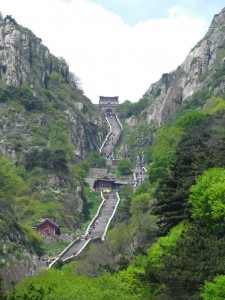
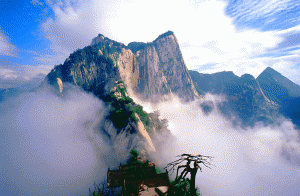
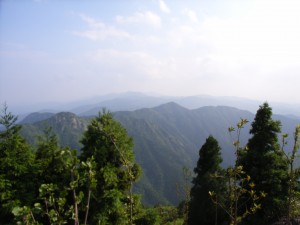
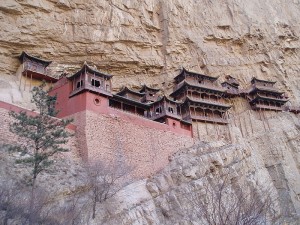
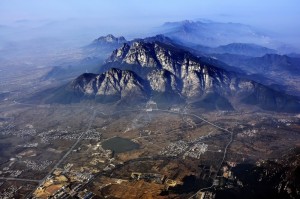

Comments:
Anne Vickery:
I have climbed Taishan. Looking at our heavily used peaks in Colorado I wonder when the Chinese put the stone steps up their holy mountains and why. I would appreciate some historical information about the steps up these mountains. Thank you,
Anne vickery
ASIKUL ISLAM:
good